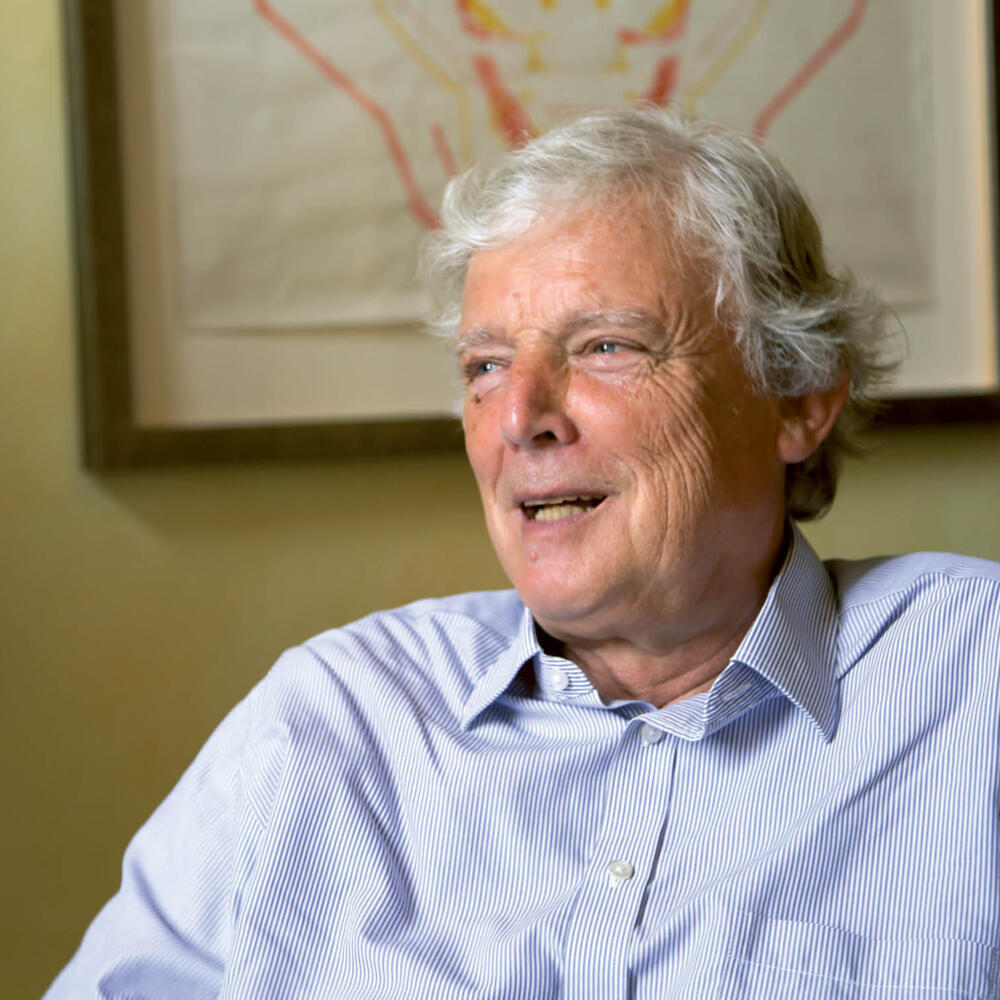When Life and Work Go Hand in Hand
Justus Wittich, Executive Board member and Treasurer of the Goetheanum, celebrates his 70th birthday on September 10, 2025. Enno Schmidt spoke with him about his life, his gift for bringing a sense of responsibility to life, and his vision of how anthroposophy can be put into practice, economically and spiritually.
One could describe the life of Justus Wittich as a life devoted to the Anthroposophical Society and movement. Even as a young man and during his studies of economics in Berlin, he was actively involved in anthroposophical youth work and initiated a series of student conferences. From the very beginning, internationalism was not a barrier for him, but rather an open connection to the world. “It was a powerful experience to meet people everywhere who, based on a similar spiritual impulse or attitude, worked very differently in their own fields, but were nevertheless spiritually connected.”
A Berlin Waldorf student conference in 1978, inviting all of Germany, which he’d played a key role in organizing, was entitled, “The Old House Is Falling Apart. Let’s Build a New One.”
“In the 1970s, there was a whole generational shift. High school students at Waldorf and Rudolf Steiner schools were awake and organized themselves on a transregional basis. There were international student conferences, starting in 1975 in The Hague, then in 1976 in Basel, 1977 in Stockholm, 1978 in Berlin, and 1979 in Bern. They became increasingly international. At first, they were purely European, then American students joined, and later Brazilians as well. A worldwide impulse emerged. From these student initiatives, Andreas Büttner, Nana Göbel, and the doyen of Waldorf schools in Germany, Ernst Weissert, developed the Friends of Waldorf Education [Freunde der Erziehungskunst] in Stuttgart. For me, this was a logical continuation after my studies.”
Justus Wittich established an international aid fund for this association in Stuttgart, became its managing director and editor of the journal Erziehungskunst [Art of education] as assistant to Manfred Leist, “… even though I knew nothing about education.” But he did know about journals. He’d already published some as a high school student. And management? “After school, I didn’t know what to study. There were various possibilities. I always had an affinity for economics, finance, and legal issues. Actually, though, that’s not really what I want to do, nor is it my intention. But I always end up there.” He didn’t associate his studies with a specific career aspiration, but he was able to use what he’d learned there about economic thinking to create an economic form of society for others in which they could realize their ideas.
Things Have to Change
At student conferences, Justus met many of the “interesting alternative thinkers and prominent anthroposophists of the time,” such as Robert Jungk, John Davy, Heinz Buddemeier, Friedrich Benesch, Lex Bos, and Freimut Duve, editor of the Rowohlt book series “rororo aktuell,” as well as the then 16-year-old Otto Scharmer and others in their younger years who later would become well-known. In Stuttgart, from 1979 onwards, his work was connected with the Union of Independent Waldorf Schools [Bund der Freien Waldorfschulen]. “The old ‘warriors’ from the post-war period were still active there. I was able to experience them firsthand.” He was able to connect with this generation and continue their work with his own intentions. “We grew out of the student movement into the Youth Section.”
When he began his time in Stuttgart in 1979, he moved in with his wife and fellow campaigner, Claudia Grah, and together they became active in both the Youth Section and the Christian Community Youth. A decisive experience for both of them between 1978 and 1979 was a large anthroposophical youth conference with Jörgen Smit in Kings Langley. “This shook me up so much that I then joined the Society. For me, it had too much of a mystical atmosphere. English post-war buildings, winter, it was gloomy, candlelight, a large circle in semi-darkness, lofty spiritual speeches. One person went crazy and wouldn’t stop talking. It was clear to me then: this kind of mysticism won’t do. This is not anthroposophy as is needed in the twentieth century! Now I’m joining the Society. Things have to change!” Jörgen Smit was different. “He was already a role model for me at the student conferences. There was clarity, directness, and insight.”
This text is an excerpt from an article published in the (online exclusive) Goetheanum Weekly. You can read the full article on the website. If you are not yet a subscriber, you can get to know the Goetheanum Weekly for 1 CHF./€.
Title image Justus Wittich, Photo: Enno Schmidt

